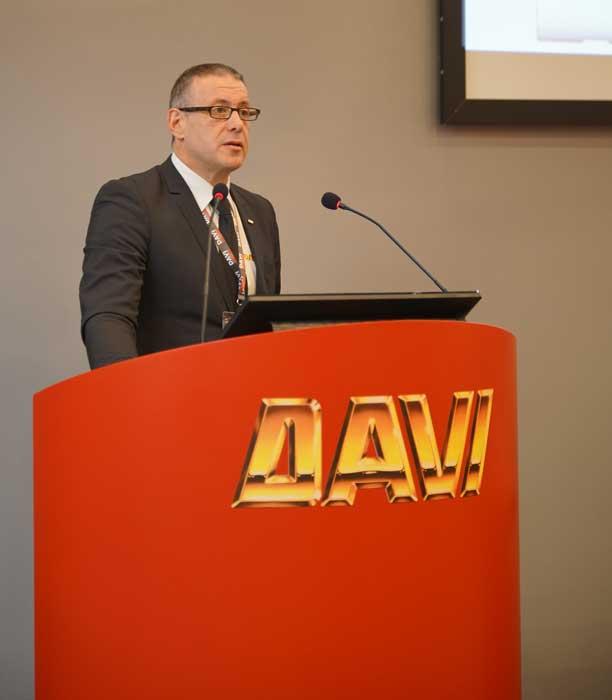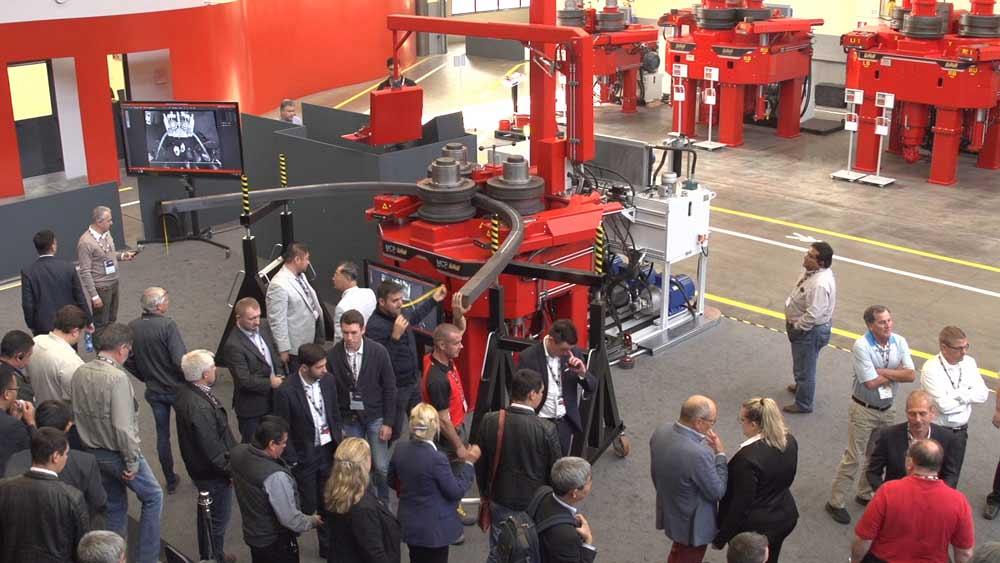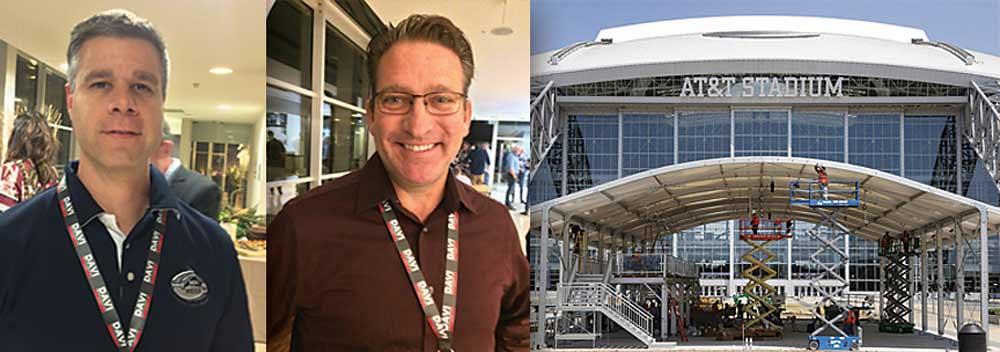Contributing editor
- FMA
- The Fabricator
- FABTECH
- Canadian Metalworking
Categories
- Additive Manufacturing
- Aluminum Welding
- Arc Welding
- Assembly and Joining
- Automation and Robotics
- Bending and Forming
- Consumables
- Cutting and Weld Prep
- Electric Vehicles
- En Español
- Finishing
- Hydroforming
- Laser Cutting
- Laser Welding
- Machining
- Manufacturing Software
- Materials Handling
- Metals/Materials
- Oxyfuel Cutting
- Plasma Cutting
- Power Tools
- Punching and Other Holemaking
- Roll Forming
- Safety
- Sawing
- Shearing
- Shop Management
- Testing and Measuring
- Tube and Pipe Fabrication
- Tube and Pipe Production
- Waterjet Cutting
Industry Directory
Webcasts
Podcasts
FAB 40
Advertise
Subscribe
Account Login
Search
Next-gen angle rolling
Unchanging section rolling technology just evolved in 5 ways
- By Kate Bachman
- January 11, 2018
- Article
- Bending and Forming

Promau Davi introduced its re-engineered and expanded angle bending machine line, equipped with a radius-checking vision system, automated CNC bending, auto learning, precision hydraulics, and mandrel bending in a compact frame. Above, Davi Technical Specialist Arjen Alderliefste explained how a drawing file can be superimposed over the view of the actual structural member being rolled using this iRoll©-Camera system. The system allows the bender to compare the part with its intended design on a blueprint, DXF file, or CAD file.
Imagine if a fabricator did not have to remove an angle rolled structural member from the machine and lay it on the floor to measure it and check its radius. Can you envision the potential of being able to see where your component is deviating from the blueprint and to correct that deviation while it is still in the machine—and then to be able to save those motions in memory to be recalled later?
What if you could individually control the angle rolling machine hydraulics at not just two but at four positions?
Mandrels have long been used in rotary tube bending to help eliminate distortion and ensure wall integrity during the bending of thin-wall tube and very tight-radius bends. Why not use mandrels in roll bending to achieve the same?Finally, who wouldn’t want a more compact machine if it performs with the same power and bending strength?
Re-engineered Features
Orazio Davi, president of the Promau Davi Italian headquarters, welcomed participants at an October company-hosted conference entitled Master Benders Tech Event, where the OEM introduced its next-generation section bending machine line. Davi, already a manufacturer of angle rolling equipment and a longtime leader in plate rolling machinery, saw an opportunity to grow and realized it was time to change its strategy and invest more in the angle rolling market, Davi said.
In expanding its angle roll product line, company management sought to go beyond adding what already existed and to see where it could improve it. First the company sought input and feedback from customers. “We asked, ‘What changes would you like to see?’” Davi said. Then the manufacturer invested in R&D to make them, one by one, he said. “As a result, our angle roll line has been completely redesigned,” he said.
1. Radius-checking System. The most notable improvement to the company’s section roll machines line is that it is equipped with a new radius-checking vision system called iRoll-Camera. The system allows fabricators to immediately compare the radius of the drawing or model with the actual part being bent without removing it from the machine.
The iRoll-Camera is positioned high above the operation so that the journeyman/bender can view the member and operation on a large color LCD screen. The bender imports a blueprint, DXF file, or CAD file into the system to the CNC, which is then visible as an overlay.
Alternatively, the operator can draw shapes and radii directly on the screen to use as a template. “You just draw the line and give it the radius that you want,” said Paolo Tassinari, angle roll division product manager (see Figure 1).
“The process starts by measuring the profile distance from the machine base as a reference point, and this is done by clicking on a minimum of three points: right, left, and center,” Tassinari said. “With this simple operation you can check if the radius is right or not,” he said.

Figure 1
Paolo Tassinari, angle roll division product manager, introduced Davi’s section bending line, citing five major improvements over previous models. Photo courtesy of Davi Inc.
Even multiradius jobs can be done on the machine. “You start bending the large radius and complete the job by moving the smaller radius template on the section in the real operation and rolling the smallest radius,” Tassinari said.
The system makes angle rolling safer because operators don’t have to move the part back and forth from the machine to the floor to measure it, stressed Davi Inc. President of the U.S. Branch Alex Soffritti.
The journeyman controls the entire operation from the monitor station (see Figure 2).
2. Auto Learning. All Davi machines use digital, rather than analog, signals running through a single wire or bus, exchanging real-time data so that the CNC can monitor the machine’s electronic, mechanical, and hydraulic components during the rolling process. This allows for diagnostics of each independent system of the machine through the CNC.
The CNCs are designed to be user-friendly to assist even the most inexperienced operator.
The CNC machine acquires the radius angle and dimension and provides suggestions for alterations while the operator is working in a conventional method. This capability empowers the ability to draw files about repeatable movements from historical data.
3. Intelligent (Precision) Hydraulics. Another machine redesign has been to the hydraulics. Independent hydraulic motors and pumps and high-torque planetary drives are coupled directly to the rolls. The intelligent hydraulic system can adjust the torque to optimize the rolling process. This optional capability for the section roll machines line was done to meet the requirements of customers who need to bend large and extra-large parts with very strict tolerances, according to the company.
4. Compact Design. Another re-engineering improvement was that the machine frame has been made more compact while offering the same power and capacity. This design also helps prevent damage from forklifts because vulnerable shaft threading is now internal rather than external on the entire line—small to large.
5. CNC Mandrel Bending. Borrowed from the rotary tube bending arena, optional CNC mandrels reduce or eliminate the cracking, thinning, and defects that can occur during tight-radius bending and bending of thin and very hard materials (see Figure 3). “Mandrel bending allows the tightest possible radius bend,” Tassinari said.
The improvements were made in response to customers’ wish lists, Tassinari said. “Customers said, ‘It would be nice to incorporate automation.’ They said, ‘We want to reduce the number of passes needed to bend certain sections of material,’ and ‘We would like the ability to easily repeat orders that have historical processing.’ Keeping in mind all of this, we introduced the iRoll-Camera system.”
Figure 2
A journeyman or operator controls the entire operation from the monitor station. The redesigned hydraulic system allows benders to adjust the left-right torque and the up and down torque of the side and front rolls, as well as at both guides, for maximum control. Photo courtesy of Davi Inc.
Fabricators’ Spin
The conference attendees’ consensus was that Davi’s new line of section rolling equipment represents the next generation in the evolution of the technology.
For one attendee, it’s the auto learning feature and CNC automation of the new system that he thinks will be most useful, saying that normally it takes two years of training for an operator to be competent in angle rolling in his shop.
Another said he liked the compact frame design, and that the horizontal and vertical shaft threading are positioned internally rather than externally, protecting the threading from damage by lift trucks.
About the intelligent hydraulics that allow fabricators to adjust the torque, one observer said, “This has never been done before. It may not be important in applications where tolerances are not very strict. But to those companies that need it, it’s the difference between being able to do a job and not being able to do a job.”
But it was the iRoll-Camera radius-checking system that elicited the most enthusiasm. “Phenomenal!” “Impressive,” and “Game changer!”
Max Weiss Co. LLC Director of Operations Dave Gregg said that what most interests him is the radius-checking vision system (see Figure 4). “That is practical. It would save a significant amount of time and labor for us.” Gregg said that every part has to be measured several times during manufacture. “That’s really the only way to know if it’s right. The way we work now is we roll it and then we check the part while we’re working, and then roll it and check it.
“There’s a lot of trial and error.” Multiply the time consumed by trial and error by the 32 angle rolling machines Max Weiss operates, and it’s easy to see why the fabricator sought time-saving equipment.
Alan Sanders, vice president of sales for Max Weiss, began in the business as a structural steel fabricator journeyman, so he has firsthand, from-the-floor experience and knows the equipment and processes well. “We had equipment in serious need of an upgrade. But an angle roll machine can be a significant investment. So we went on a fact-finding mission. We were looking for outstanding engineering and reliable inventory.”
The company invested in a Davi MCP 32 angle rolling machine and an MCA 2527. “We’re very pleased,” Sanders added. “Our machines are operational and rolling product.”
Holloway Co., Fort Worth, Texas, has purchased a Davi MCP 24 angle roll machine with the iRoll-Camera radius-checking system. President Lynton Holloway said he sees great potential in his plant for the radius-checking system (see Figure 5). “Being able to check the cord and rise of the part while it’s still in the machine is great. Checking the radius during a rolling operation is something we do on a day-to-day basis.” He added, “I also like that the operator can check a large part by himself right from the control.”

Figure 3
Optional mandrels allow benders to bend tighter radii than they could otherwise without tearing and wrinkling.
His son, Hunter, who helps oversee the machine maintenance, said he’s pumped about the compact aspect of the redesigned machines. “The compact size will give us more room to work in our existing pits. We’ll be able to change out parts without having to lift the whole machine out.”
He also called the radius-checking system “phenomenal.” “Now our guys will be able to just look at the screen to realize what they have to do to roll the part to the right dimension.”
Kottler Metal Products President Barry Feldman said he views Davi’s new angle roll line as a progressive development in bending technology, but it wasn’t just the technology that sold him on the Davi MCP 18 with the radius-checking system (see Figure 6).
“For Kottler Metal Products to be successful today, we require four variables: trusted suppliers, reliable equipment, loyal customers, and skilled employees. When our machines are down, we lose opportunity,” he said.
When the fabricator’s loyal equipment supplier of nearly 25 years ceased operations three years ago, Feldman was concerned. Even with quality machinery, replacement parts are always needed. Feldman said they needed to build a solid partnership with a new, stable supplier.
So, the company decided to put Davi to the test, initially by getting tooling for existing bending machines, and then by purchasing a medium-size roll bender.
Feldman said that Davi’s next-gen section bending line shows not only that the OEM is an innovative company, but also a stable one that he can rely on for years to come—and that is as critical to the 102-year-old, family-owned company as the quality of the machinery.
“We’re looking to the future,” he said.
Aaron Simkoff is the company’s fifth generation. “Each day I arrive at the facility, I see the ‘Kottler Metal’ signage proudly displayed on the building that was made by my great-grandfather. That’s a great reminder to me that it’s my family’s legacy. Investing in the future of the business is critical to our mission and culture.”
Davi Inc., 888-282-3284, www.davi.com
About the Author

Kate Bachman
815-381-1302
Kate Bachman is a contributing editor for The FABRICATOR editor. Bachman has more than 20 years of experience as a writer and editor in the manufacturing and other industries.
Related Companies
subscribe now

The Fabricator is North America's leading magazine for the metal forming and fabricating industry. The magazine delivers the news, technical articles, and case histories that enable fabricators to do their jobs more efficiently. The Fabricator has served the industry since 1970.
start your free subscription- Stay connected from anywhere

Easily access valuable industry resources now with full access to the digital edition of The Fabricator.

Easily access valuable industry resources now with full access to the digital edition of The Welder.

Easily access valuable industry resources now with full access to the digital edition of The Tube and Pipe Journal.
- Podcasting
- Podcast:
- The Fabricator Podcast
- Published:
- 04/16/2024
- Running Time:
- 63:29
In this episode of The Fabricator Podcast, Caleb Chamberlain, co-founder and CEO of OSH Cut, discusses his company’s...
- Trending Articles
AI, machine learning, and the future of metal fabrication

Employee ownership: The best way to ensure engagement

Steel industry reacts to Nucor’s new weekly published HRC price

Dynamic Metal blossoms with each passing year

Metal fabrication management: A guide for new supervisors

- Industry Events
16th Annual Safety Conference
- April 30 - May 1, 2024
- Elgin,
Pipe and Tube Conference
- May 21 - 22, 2024
- Omaha, NE
World-Class Roll Forming Workshop
- June 5 - 6, 2024
- Louisville, KY
Advanced Laser Application Workshop
- June 25 - 27, 2024
- Novi, MI



























